Recently I got to have a look at proposed upgrades to the Comeng train fleet.
A short history of the Comeng trains
Comeng trains are named after the Comeng (“Commonwealth Engineering”) factory where they were built, with the carriages being brought into service between 1982 and 1989. The factory in Dandenong is now run by Bombardier, and in the grounds you can find a plaque from 1983 with the same logo you’ll still see on many of the trains.
Most of the trains are still in service, making them between 29 and 36 years old. Of the 570 built, there are still 555 Comeng carriages in service (92.5 x 6 car trains, though Vicsig has a lower figure), making them the most numerous in the Metro fleet, though they are about to be overtaken by X’trapolis trains in number.
Along the way they’ve undergone various upgrades:
- Refurbishment 2000-2003 by then operators National Express (M>Train) and Connex, which unfortunately split the fleet into two incompatible halves
- The “Concorde” program to make them compatible again in 2006 after National Express made a hasty exit in 2004
- Air-conditioner upgrades following the well-publicised failures of summer 2008-09
- Seat removal around the doorways in 2016 to help get more people on-board and provide more standing room
Next steps
The Rolling Stock Strategy released in May 2015 flagged another set of upgrades to keep Comeng trains going into next decade until they can be replaced by the new “High-Capacity Metro Trains” (HCMTs) to be introduced from 2018.
Specifically, the strategy flagged: $75 million for maintenance and refurbishment to extend the life of the current Comeng train fleet, with an expected phase-out from 2022-2025 — though of course it remains to be seen if this happens as quickly as that.
In the next few months we’ll start to see visible signs of this. The work is being done at the Craigieburn Train Maintenance Facility (TMF), which was opened in 2011 and is the “home depot” for the Comeng fleet.
This makes sense in the context of the Five group railway plan, which flagged that the overall train fleet would be semi-permanently dedicated to specific lines. The Comengs would run on the Northern (Upfield, Craigieburn, Sunbury) and Dandenong lines, obviously to be replaced by the HCMTs first on the Dandenong line, then the Sunbury line (when the two are connected via the metro rail tunnel from 2026) then presumably the others.
I was invited by Metro to have a look, and headed up to Craigieburn one Friday afternoon. It was surprisingly busy with people leaving the city, as well as school kids heading home.
I’ve been past Craigieburn numerous times, but the last time I stopped off was not quite ten years ago, for the opening of the new station and extension of suburban services. On that day, then-Premier John Brumby (pictured) and Transport Minister the late Lynne Kosky (I think she’s standing on the other side of Brumby) rode a train to the new station to officially open it. Brumby was whisked away by car, but Kosky, to her credit, stayed longer to answer questions and meet the public.
The new Train Maintenance Facility itself is impressively large, and is part of a larger complex of sidings north of Craigieburn station, and alongside the rail line north to Seymour, Shepparton and Albury.
After signing in, we took a look at the various changes they’re trying out.
Prototype changes
This front cab design isn’t going to be used… it’s not very appealing, is it. Sounds like instead they’re likely to go for a stripe design with more blue.
What is changing is the marker lights (the small bulbs above the cab windows) will change to LEDs. The handlebars at the front, often used by train surfers, may be removed (in a future project) — apparently they used to be useful for drivers to do diagnosis on faults, but are rarely used for legitimate purposes now.
The interior prototypes have been reviewed by a number of stakeholders, and include a raft of tweaks.
Several designs of seat cushion are under consideration:
More visibly different “special needs” seats (you may recognise the pattern from the trams; apparently this is likely to become the standard PTV design):
Possible implementation in a future project: wheelchair spots at second door as well as the first, which may be useful where larger number of wheelchairs need to board on a single trip:
Extra hand straps, similar to those on the X’trapolis trains, and designed not to cause an issue when tall people bump into them!
Centre poles (except in the doorways for wheelchair boarding) like E-class trams:
Not shown on the day were that handles on the backs of seats will be made larger. This may make up for the problems they have installing hand holds along the carriage, away from the doors.
They are not removing the fifth seat of each row (as has been done with the X’trapolis trains), as this is technically difficult/expensive on the Comeng fleet. However they may remove a small number of seats at the ends of carriages.
Carriage connections
It’s not illegal to move between carriages, but it is illegal to ride (eg stand) on the inter-carriage platform while the train is moving. This is relatively common, and is a favourite spot for nicotine addicts who just can’t bear to be on a train without a cigarette.
It’s less common for people to try and enter and exit the train this way — but it does happen.
Riding there or boarding is dangerous – it wouldn’t be hard to fall and slip underneath the train, especially if it’s moving. The carriages may bounce around, and you’re only held in by a some bars and a chain. Being outside the carriage structure, there’s also no protection in a collision.
On my trip up to Craigieburn, I’d noticed a few school kids had changed carriages via these doors, some while the train was moving.
The platforms are also used to gain access to the roof, which often has fatal consequences.
Metro can’t just lock the doors – they may be needed in an emergency situation. So they’re looking at ways of enclosing the connection, as in the Siemens and X’trapolis trains. The two designs they’re trying out are similar to what’s found in those trains.
Bellows, similar to the Siemens fleet (but leaving the doors in place):
Similar to the X’trapolis design — this one has some teething problems as they’ve found a gap appears when the train goes around sharp corners.
Upgrades to come
These upgrades will start to appear in service from about the middle of this year.
I’m told that later changes next year will include an overhaul of the air-brake system and Passenger Information Displays as well as CCTV.
I still look fondly on the Comeng fleet – back in the day, when they were the only air-conditioned carriages, in hot weather it was a joy to see one approaching.
It’s good that there’s a plan to improve them to keep them in service a bit longer, since it will mean as the newer trains come into service, they can initially be focused on growing the size of the fleet to cope with patronage growth. It would make no sense to throw away good carriages for want of a little TLC.
Barring any out-of-left field plans to keep them running (one proposal was to use them on the Geelong line, hauled by diesel engines), eventually the Comeng fleet will be phased-out next decade, having done at least 40 years service.
Thanks to Metro Trains for inviting me.
Edit 11/3/2017: Minor changes to the text to correct some errors. Some of the proposals in the prototype unit are for evaluation for later projects, and are not being implemented across the fleet at this stage.
Update 10/10/2017: It took a while for things to get moving, but the first unit is finally in service.
The state government is spending tens of millions of dollars to extend the life of Melbourne's oldest trains. @andrew_lund #9News pic.twitter.com/qdHoqG87XL
— Nine News Melbourne (@9NewsMelb) October 10, 2017
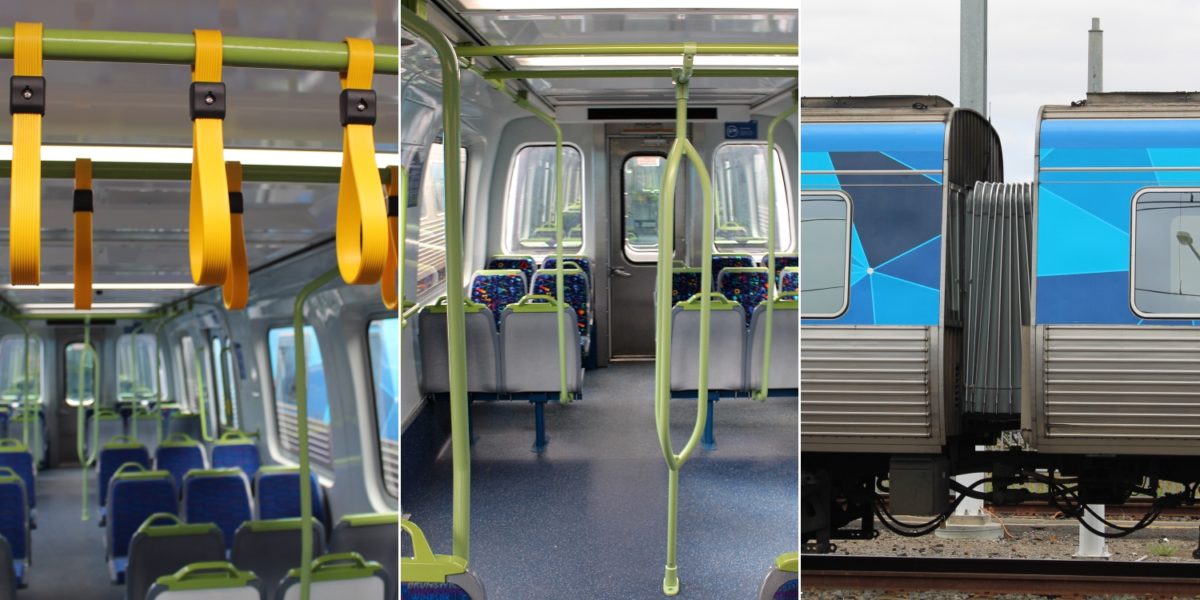
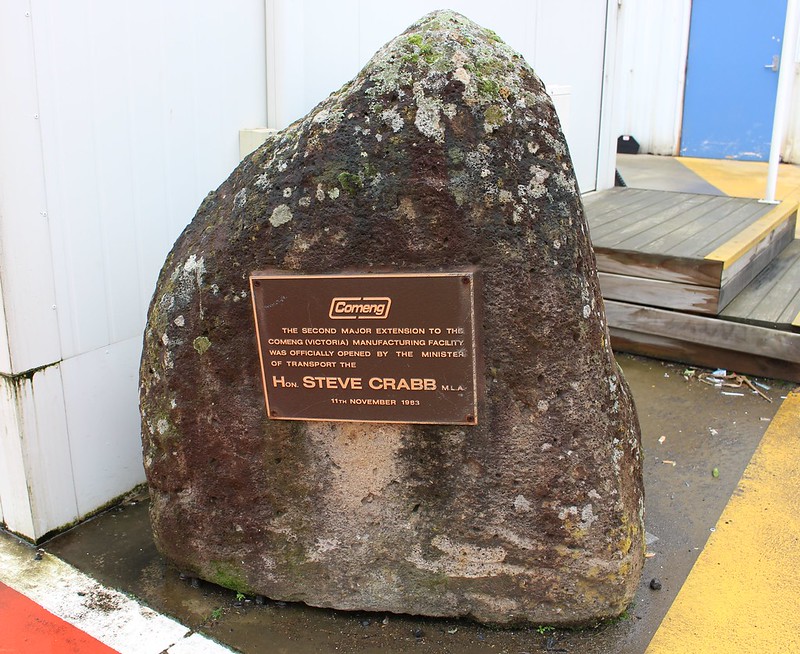
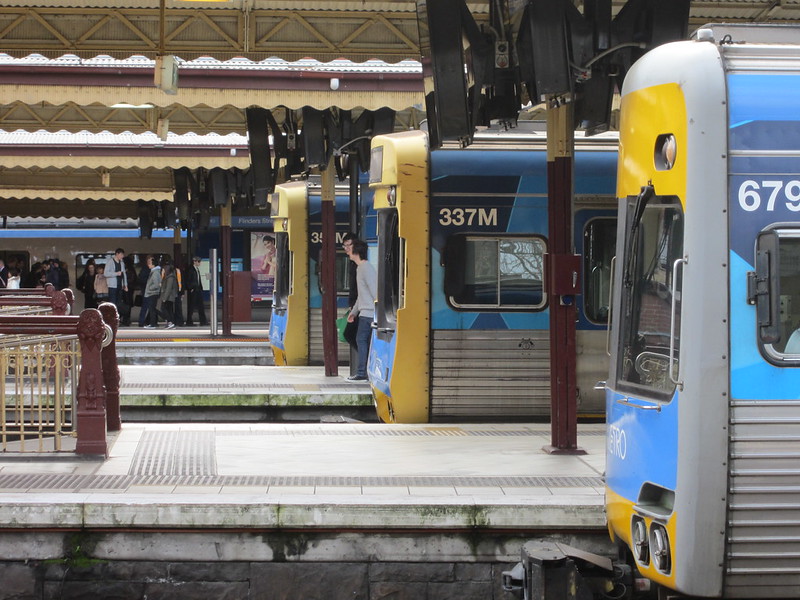
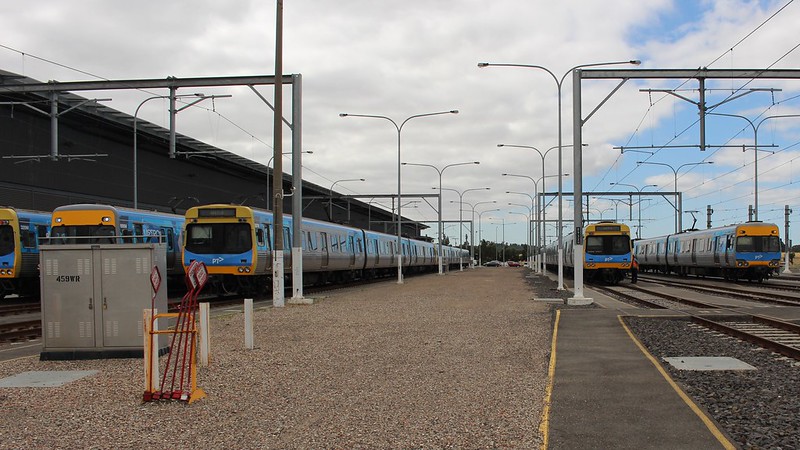
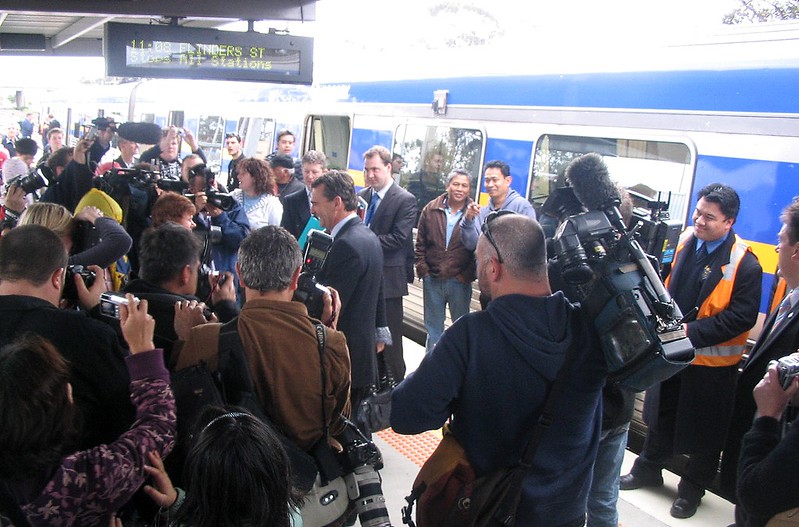
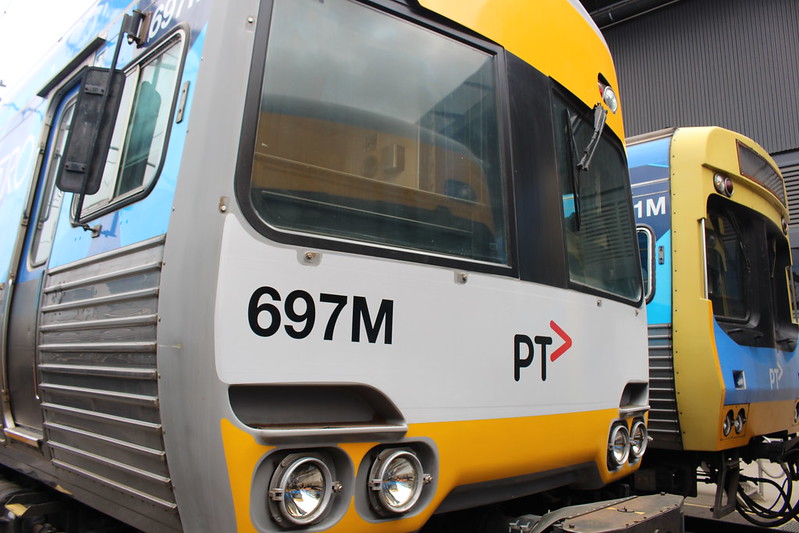
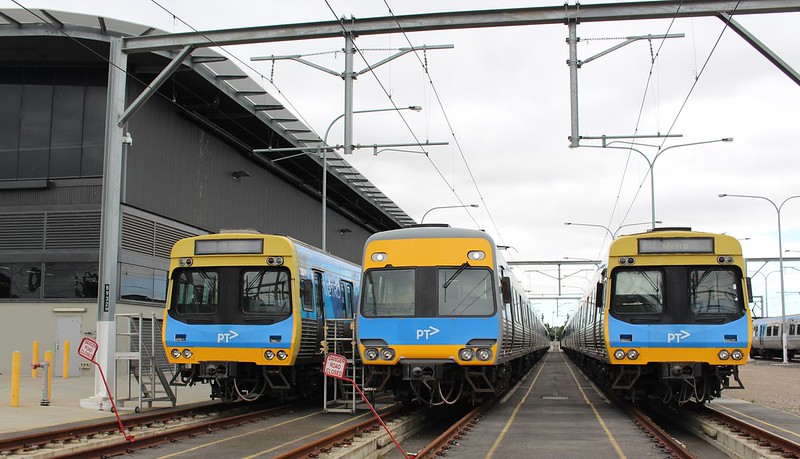
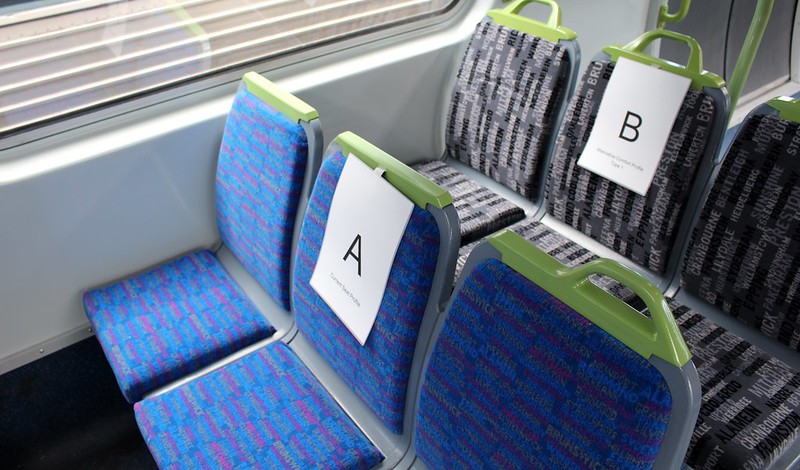
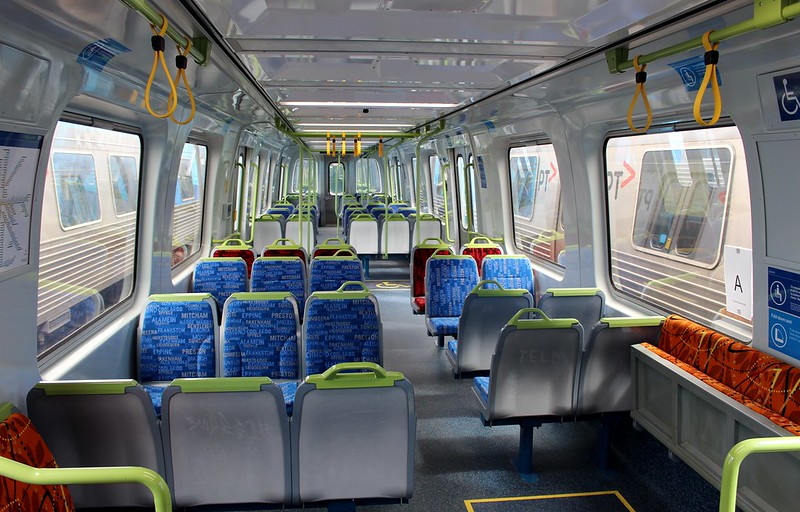
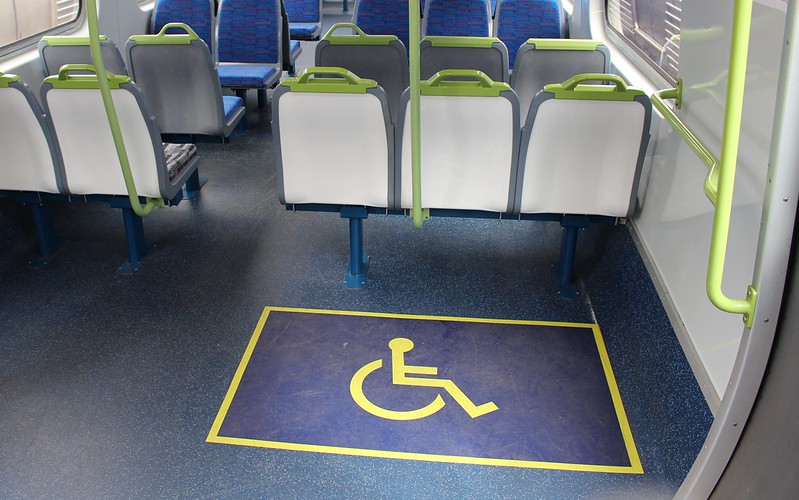
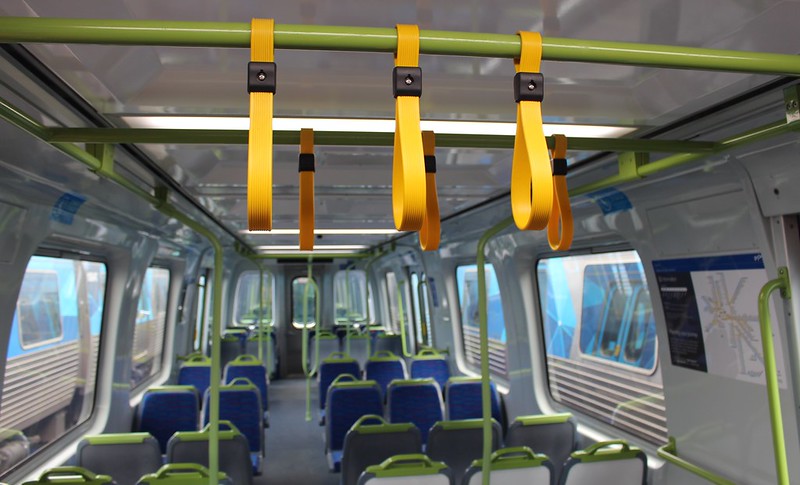
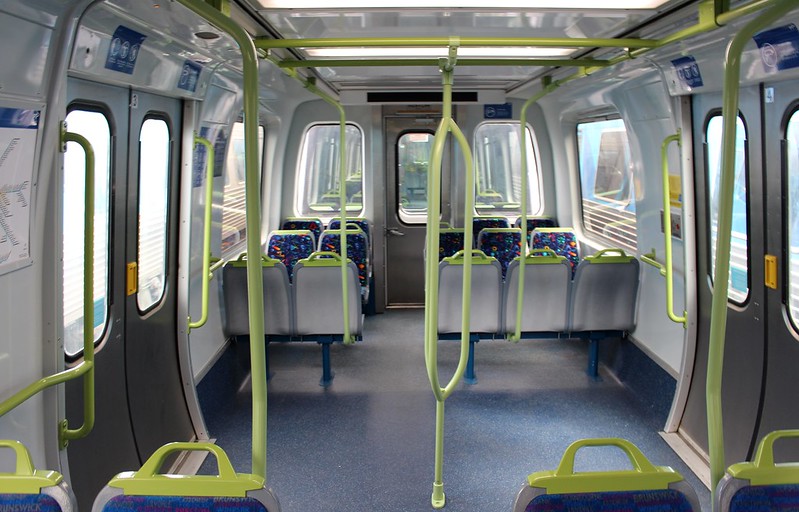
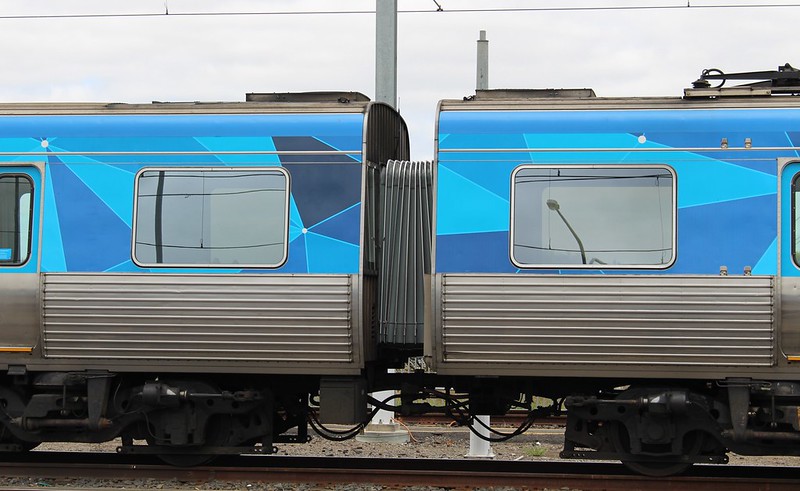
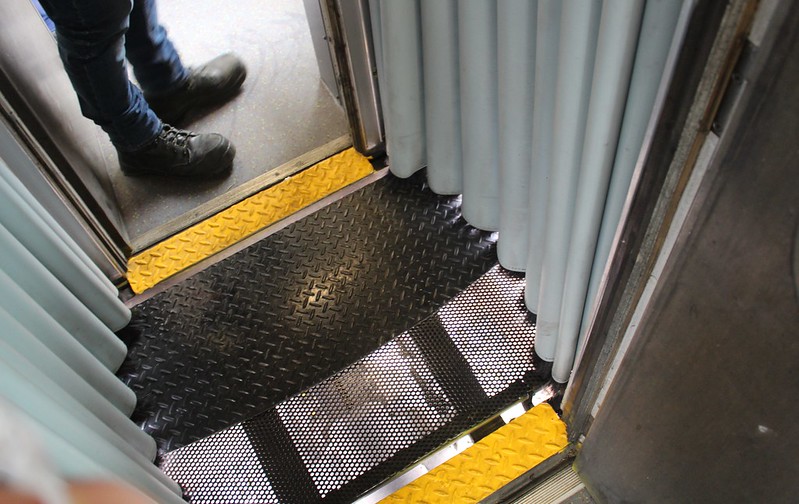
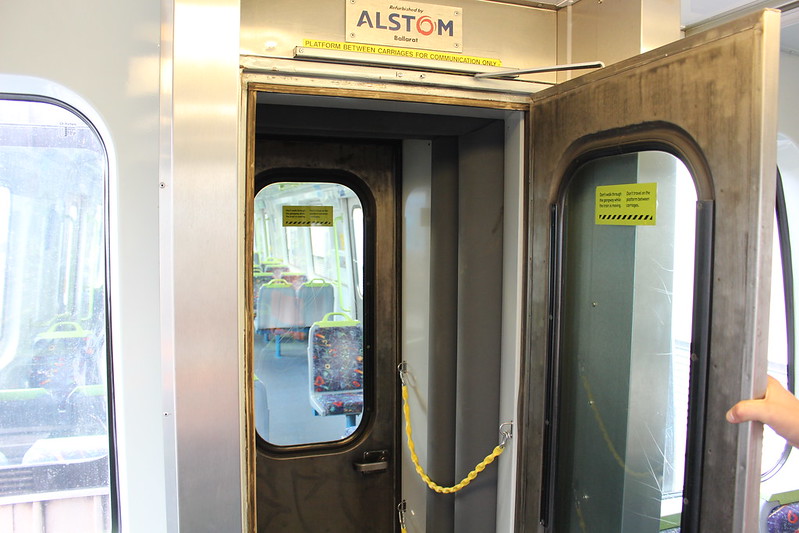
28 replies on “Comeng train fleet to be upgraded”
Great review Daniel.
One problem I’ve noticed is the seat layout for people with disabilities. It is very difficult for some slow moving elderly people to make it to a seat before the train departs. It’s also a problem for guide dogs as there is nowhere obvious for them to lie. If only there were some seats near the door facing into the carriage! (The seat configuration fits more people in but disadvantages the vulnerable).
I’m genuinely impressed with the initiative here! The new apholstery designs look much better, and frankly I like the grey front of the cab – the particular shade of blue used by Metro is a bit tacky.
I noticed the other day one Comeng running with the new LEDs on front of train. Not sure what the difference is – other than that the writing is now orange instead of green.
And praise the lord for fitting the “middle pole” in the standing area! So many times you see people who are just too short to reach the railings above them struggling to hold on. I’m tall enough but I still find it feels a bit awkward and can tire the arm after a long trip standing up.
Yeah, being 6’4″ I find those seat handholds are a bit on the low side. It’d be a lot better if they ran tubing down those aluminum air conditioning vent covers which run the length of the carriage. Short people can hold onto the seats, tall people can reach up to the tubing.
Another upgrade project currently underway on the Comeng fleet is the replacement of bogies beneath the disc braked trains:
https://railgallery.wongm.com/page/search/tags/disc-braked-comeng-new-alstom-bogie/
The cracks were identified in the bogies back in 2013 – “100 replacement bogies along with options for up to 75 more at a total cost of more than $5 million”
http://www.theage.com.au/victoria/cracks-found-in-metro-train-bogies-20131223-2zumq.html
Looks pretty good overall.
Did they say why they’re keeping the doors between carriages for the Siemens-style inter-carriage diaphragm?
If they just add more grab-poles and grab-rails in the Comeng trains, I will be very happy.
During the AM crush load, my SO and myself will move to the aisle between the seats and hold onto the handles on the back of seats, but I think the horizontal grab-rails need to extend all the way above these seats closest to the aisle. Sometimes I find myself standing in the aisle area where the seats face each other and not having anything to hold onto. Grab rails here would really help.
Another of my pet peeve is that those grab-rails are too high for anyone shorter than the average male. As much as I enjoy the comfort, we often find myself holding onto the grab-rails, while my SO have to grab onto me in a crush load. Having those loops like in the X’trapolis or more of those vertical grab-poles would really help for those who can’t reach the grab-rails.
Please tell me they will put dozens of those yellow straps on the ceiling-mounted rails, not just 3 as shown in your photo!
There’s no good reason why they can’t put longitudinal ceiling rails down the whole length of the carriage. Often the excuse is that the structural fixing point is too close to the windows/too far from the aisle. But I have seen this problem overcome in Tokyo with an angular bracket that positions the rail in the right place. They don’t need to invent it, just go find somewhere it’s been done and adopt it.
The central pole, and additional vertical poles near the seat-backs, are fantastic and long overdue additions.
The different coloured seats for special needs passengers is an awesome response. I hope they will also provide longer, lower-hanging, colour-coordinated straps in the areas designated for special needs passengers?
I hope there’ll be a systematic program to eliminate high-pitched whining from all Comeng carriages.
The windows introduced between carriages in the 2001-2003 upgrades have been great passive surveillance and also for looking at comparative loading levels of carriages.
The inter-carriage connection coverings are very welcome. They will help inter-carriage movement, in inclement weather. The smokers will probably be discouraged from using the areas by the enclosure.
The extra wheelchair markings make sense given that the driver operated ramps are still needed at some stations because of curved platforms (well currently most but it is declining, slowly) and thus they can`t just use the rear or (more often crowded) middle wheelchair sections as the drivers would have to walk to far (although the rear sections can theoretically be used between stations that have those raised wheelchair sections).
No mention of modifying the doors to be button operated, like they did in Adelaide?
Why no fold down seats where the second wheelchair area is? Actually, why not have fold down seats on the back of all of the seats around doorways?
It’s the best of both worlds: extra seats when the train is quite full and standing room when it is crush loaded.
Looks like quite an improvement overall though.
“This may make up for the problems they have installing hand holds along the carriage, away from the doors.”
What are these problems?
@Michael (Post 10)
I’ve been told from a few people that can’t happen unless a more powerful MA(motor alternator) is fitted. The current ones are very much on the limit.
@Steve – it would be fantastic if folks only used fold-down seats in low/medium loading situations, and left them folded away to provide extra standing room during heavy loading. Alas, this very sensible suggestion is never observed in real life on Melbourne trains.
Correct me if im wrong but didnt the franchise agreement stipulate Metro had to covert the seating layout to 2-2 (along with the 1st generation Xtrapolis units)? Surely it isnt that hard to do and would be a more efficent layout.
New trains would be nice, but the Comeng work well and should have a bit more useful life to get out of them. My only two concerns are (as mentioned above) the incessant high pitched whine, which really drives me nuts sometimes; and the door handles. I think for accessibility’s sake, they should endeavour to replace them with buttons as a part of any upgrades. They are not great to use at the best of times, but someone carrying a heavy load, on crutches, or not otherwise able may find them a real pain to use. Especially with recent platform upgrades to allow level boarding for wheelchairs, having buttons would definitely help to improve usability.
being 6’6″ I welcome the higher grab rails – I have to duck a little to get in the train doors and often forget to look before straightening to a very painful encounter with a grab rail….
I like the idea of a another wheelchair spot being a wheelchair user. But will that mean drivers have to carry the ramp to the 2nd door or will the seating be altered to wheelchair users can move down the isle?
Didn’t they replace all the seat cushions on them as little as 5 years ago? Another nice waste of money
@ Jacko
I’d hate to know how often you replace your pillows.
@ Jacko: The current fabric used on most of the trains dates back to the year 2000, and looking closely, you will find letter-like symbols in the seat pattern which resemble C, E, N, O and X. The newer seats (first introduced in a number of Siemens trains around a decade ago I might add, to replace the worn out M>Train fabric) are at least generic with only station names rather than the (defunct) operator name hidden in them as alphabet soup.
If they are going through another refurbishment, why not internally upgrade the fleet of EDI and Alstom sets to the same internal standard instead of retaining two different interiors? I’m surprised the M>Train yellow handrails have remained on the network for so long.
The higher resolution LED destination and internal displays (PIDs) from the X’Trapolis trains are much better than that of the former displays from both sides of the Comeng fleet. The older Alstom destination displays are of a low resolution with a narrow font, while the EDI cars, save for a couple which received a test upgrade, have bus-like displays which are almost unreadable at night, made even worse when there is dirt over the sign after a 3 car set has been split up and remarshalled with the middle cars finally leading again (I really thought dirty fronts would have been history after the last 6 carriage Hitachi left the network for good).
Would they be able to even put a new, larger destination sign at the top of the Alstom cars like the EDI cars have? Ever since the Concorde project they have not used the second line in the original Connex displays so the original two-line display in the off side window is mostly redundant, and difficult to read, which was a complaint even back in 2000 when the first refurbished set was running around the system.
Seat cushions get replaced at a relatively high frequency when torn or badly soiled. The fabric pattern may be the same to maintain a consistent look in the cabins
Any word on them replacing the worst destination displays in history (the tiny displays in the driver’s window of the grey faced Comengs)?
I like the large sized destination signs, although they do need to have a better LED type so we can at least see them.
There is a lot of equality and discrimination noise from the western suburbs for they are not getting these new trains. For that reason, there is a strong rumor of Xtraps going system wide.
To conclude, I will say that I do like the Comeng trains. I prefer the original design, seats where nicer.
Re post 10 and 13, I always thought the doors were air operated?
I may be wrong, as I’m in Adelaide and can’t hear any air or electric sound at the doors. I also noticed they close the last few cm very gently, that’s hard to do with air.
If they are replacing the internal led pids where are they going to get the extra power from? Really at least need one at each end as if your caring the wrong way you can’t see the one in the middle.
Should also be a destination display on the side like trams, hard to tell where a train is going if you miss the one on the front.
Hi Daniel
These will be two gunzel/statistic question, I finally saw a set with intercarriage concertina today, but a Siemens set was on the way, blocking the first carriage where they put carriage number , so I was wondering…
Do you have the carriage number for the set with the intercarriage concertina?
(you don’t have to give me the number for the whole set, even just give one number for one of the carriage, for example, 1135T , I can then work out what the rest are!, your photo already shown one of the driving carriage “something-something-1M” )
And was it 1-3 car set with concertina or 2-3 car sets with concertina?
Thanks in advance
[…] The current train “load standard” is 900 people per 6 carriages, with about half of those seated, and half standing. (The magic number used to be 798, or 133 per carriage. Recent changes made it 900, or 150 per carriage, with more changes to come). […]
[…] the planned Comeng train refurbishment includes these previously flagged changes to interior layouts and seating, and inter-carriage connections. It’s unclear what the planned upgrades to B-class trams, and other train types will entail […]